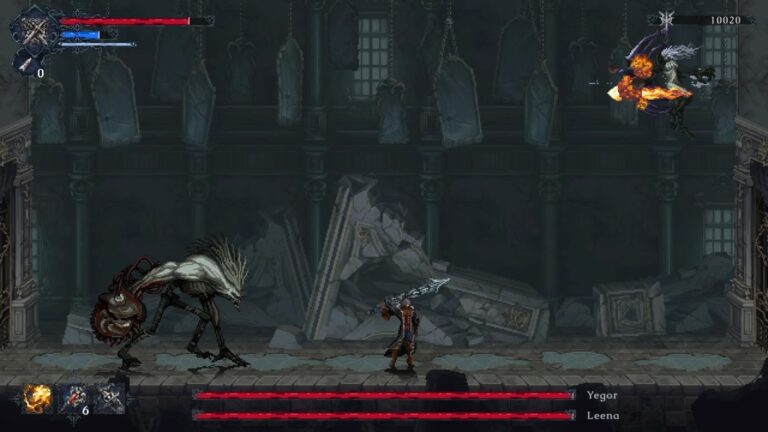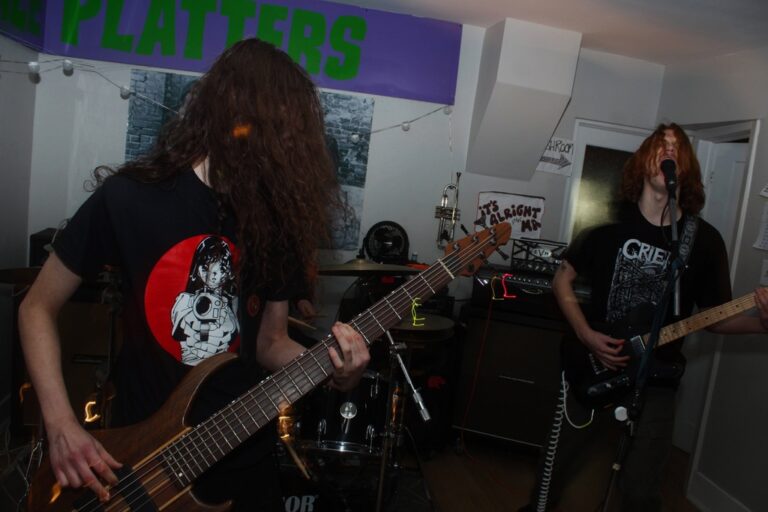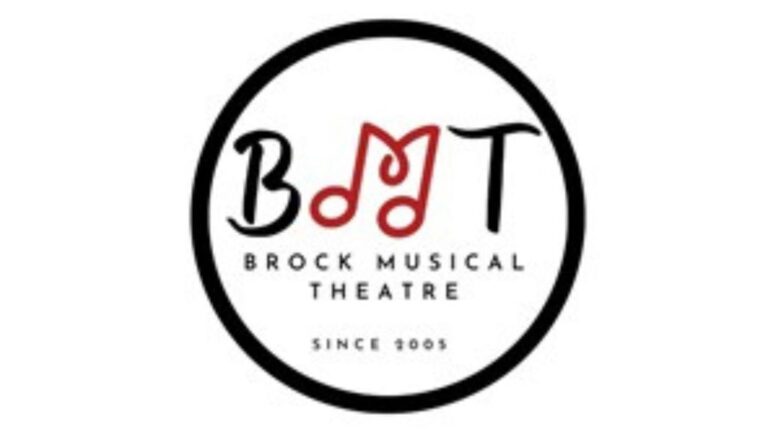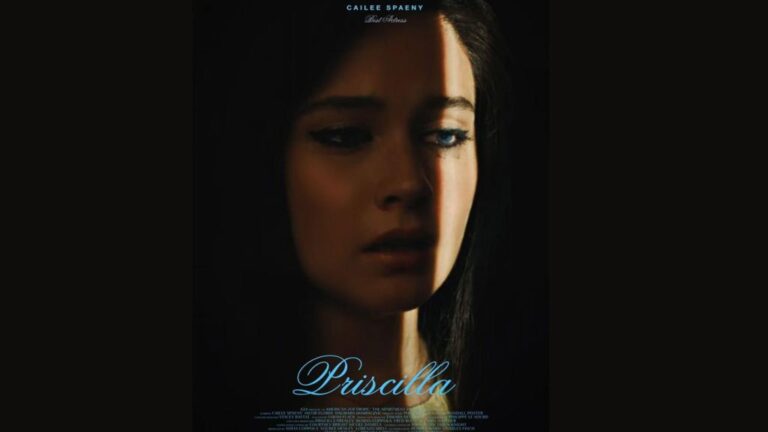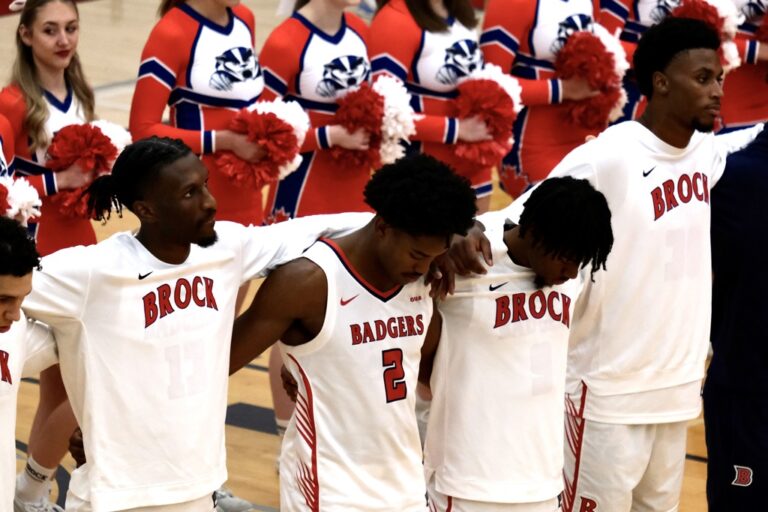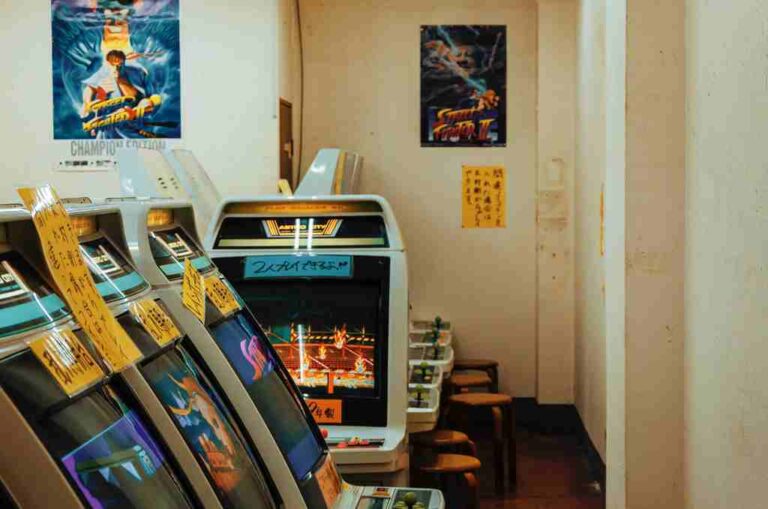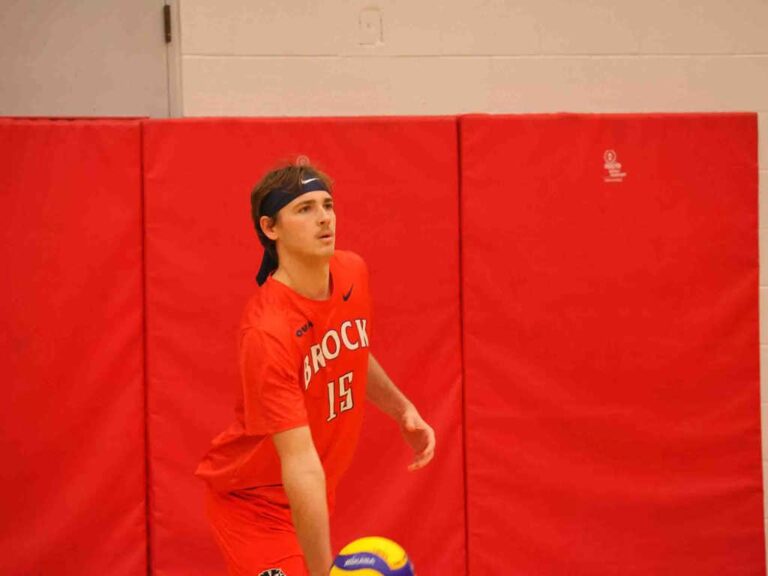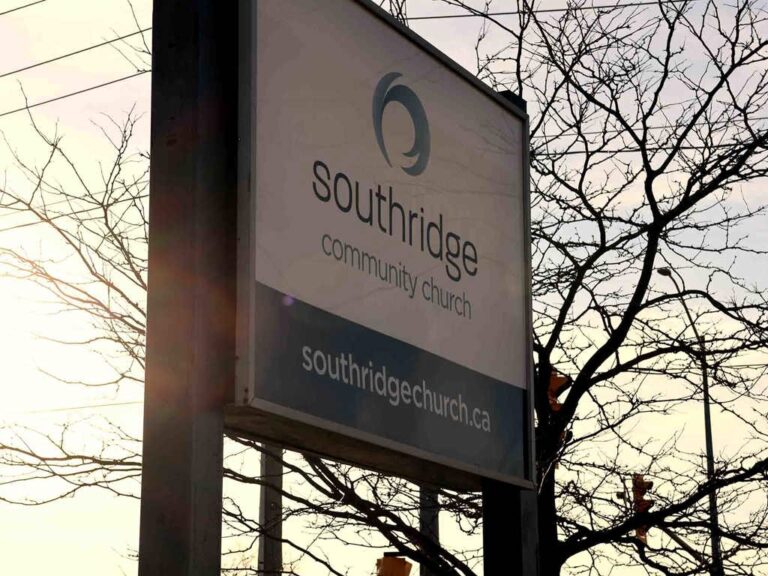A Chabad at Brock spokesperson involved in the creation of an antisemitism workshop presentation in collaboration with Brock Human Rights and Equity (HRE) has confirmed their deliberate use of a propagandistic front-page story image from conservative tabloid newspaper the New York Post. Arab, Palestinian and Muslim students present at the presentation allege that the anti-Palestinian and Islamophobic rhetoric around the image were carried over in responses directed at them by the workshop presenter.
On Sunday, Nov. 5 an image surfaced on the r/brocku subreddit showing a New York Post front-page story image titled “BLOOD LIBEL.” The deck of the article — which is expressly advertised on the New York Post’s website as the story being referenced on the front page issue image from Oct. 19 which was the same story-image used in the workshop as a pedagogical tool — is also featured in the front-page image and reads “Islamic terrorists killed their own people in hospital explosion — then falsely blamed Israel,” the hospital in reference according to the New York Post article being the Al-Ahli hospital in Gaza’s Old City.
The user who uploaded the image to Reddit titled the post, “Racist ‘antisemitism’ event?”
The event from which the image surfaced was part of a two-event series titled “Holocaust Educational Week Series at Brock University.” The event in question was titled “ANTISEMITISM: The Longest Standing Form of Hatred / A Socio-Historical Perspective.” The event was co-hosted by Chabad at Brock and Brock HRE and was held on Thurs., Nov. 2 in room 215 of the Rankin Family Pavillion.
A day after the workshop, on Nov. 3, a detailed analysis by New York Times senior writer David Leonhardt as to the cause of the Al-Ahli bombing claimed the following:
“… While much about the [al-Ahli] hospital explosion remains unclear, the available evidence points toward a Palestinian rocket, not an Israeli airstrike, as the more likely cause… This episode doesn’t mean that Gazan officials always mislead or that Israeli officials always tell the truth. Even in this case, for example, Israeli officials have cited video evidence that Times reporting suggests does not support their argument. Both sides deserve continued scrutiny.”
Similar inconclusive conclusions have been reported by BBC, Channel 4 News, the UN and many independent news organizations.
Many on the side that believe Israel conducted the bombing point out that Human Rights Watch has documented Israel bombing critical Palestinian infrastructure with white phosphorous in the past, which is illegal under international law as per the Geneva Conventions.
Critics of Israel also point to the many confirmed instances of propaganda used by Israel officials in the conflict thus far, such as a fake video created and spread by Israeli officials on social media of a supposed Gazan nurse telling Palestinians to evacuate to the south on top of more IDF talking points. Furthermore, the World Health Organization stated that Israel’s evacuation order to north Gaza’s hospitals in the current conflict is a “death sentence.”
Hospital bombings are illegal under international law.
Inflated reports of deaths resulting from the Al-Ahli bombing by the Gaza Health Ministry (GHM) have also seen light criticism from CBC as to the accuracy of their reported numbers. However, Human Rights Watch officials told CBC that the GHM has been mostly accurate in the past.
Many organizations and experts of the region have cautioned that information taken directly from Hamas officials and the PIJ or Israeli officials should be treated with great scrutiny and not presented as fact.
The New York Post article was published on Oct. 18, a day after the explosion in the Hospital’s parking lot. The article only cites official Israeli reports and a statement by Joe Biden in defence of the explosion’s cause being conclusively a Palestinian missile failure:
“Hamas had claimed that an Israeli airstrike killed more than 500 people, including civilians seeking treatment, at the Al-Ahli Arab Hospital.”
But Israeli officials refuted the claim and demonstrated that the blast at the hospital was caused by a misfired rocket launched by the Palestinian Islamic Jihad (PIJ).
The attack marked the deadliest escalation of the war between Israel and Hamas since the terrorist group launched its surprise attack on October 7.”
Aric Toler, visual investigative journalist for The New York Times, refuted the initial Israeli video evidence by showing that the timelines didn’t match. Israel promptly deleted the video off their official social media accounts soon after. This same evidence wasn’t denounced or mentioned in the New York Post article.
The article also mentioned audio released by Israel meant to prove the bombing was a result of a misfire by Hamas and PIJ: “Israeli officials used surveillance pictures and audio recordings to prove the blast at the hospital was caused by a misfired rocket the Palestinian Islamic Jihad.”
However, the audio tapes were subsequently recognized to be dubious as the dialect in the audio isn’t accurate according to Muhammad Shehada, communications chief at Euro-Med Human Rights Monitor. Shehada stated that even if the voices in the audio are Palestinian, it certainly is not the dialect of a Hamas member, as Israel alleged.
As of writing, the New York Post has not issued any corrections or comments on their reporting from Oct. 18.
No unequivocal proof has emerged as of writing of the hospital bombing being caused by either an Israeli airstrike or a Palestinian Jihadist/Islamist group missile failure, despite the antisemitism workshop presenter claiming the latter were to blame for the hospital explosion.
A Chabad at Brock spokesperson affiliated with the creation of the workshop presentation who wished to remain anonymous provided an exclusive statement to The Brock Press on the reason for the use of the New York Post story-image:
“The session on November 2nd was focused on antisemitism awareness and only discussed antisemitism. Part of the session did discuss horrific antisemitic terror attacks that were carried out by Hamas (a federally and internationally recognized terrorist group) on October 7th, and a rocket fired by Palestinian Islamic Jihad (also a federally and internationally recognized terrorist group) that misfired and hit the Shifa [sic] hospital in Gaza, which many tried to blame on Israel.
“The New York Post article displayed on one of the powerpoint [sic] slides and [sic] simply displayed an article discussing the media’s inaccurate reporting of the Shifa [sic] hospital blast in Gaza. The New York Post article did use the term Islamic terrorists in reference to Palestinian Islamic Jihad in the context of the missiles they fired that misfired and hit the Shifa [sic] Hospital. When speaking about Hamas and Palestinian Islamic Jihad’s antisemitic attacks and actions, we made it very clear that we were only referring to Hamas and Palestinian Islamic Jihad, their antisemitic actions and how this impacts the Jewish community.
“We were not speaking against anyone’s Muslim identity and we made that very clear. The slide with the New York Post article was not in reference to nor had anything to do with anybody who is not a member of Palestinian Islamic Jihad.”
As previously mentioned, The Brock Press has found no evidence to conclusively corroborate the claims made by the Chabad at Brock spokesperson that Palestinian Islamic Jihad or Hamas were responsible for the bombing of the Al-Ahli hospital.
Furthermore, the New York Post article was reporting on the Al-Ahli bombing and not the Al-Shifa bombing.
No one at Chabad at Brock has issued The Brock Press a correction or clarification related to which hospital they are referring to since their statement was issued on Nov. 17.
Of the two Al-Shifa hospital attacks that have happened this November, one was an airstrike on an Al-Shifa ambulance that took place on Nov. 3 — a day after the workshop — which Israel confirmed was carried out by the IDF. The second was the siege of the Al-Shifa Hospital by Israeli forces that started on Nov. 11, which was nine days after the workshop.
As of now, Brock University’s Human Rights and Equity department members haven’t responded to requests for a statement.
The University’s Communications, Media Relations and Public Affairs department provided the following statement for The Brock Press when asked for comment:
“Universities serve society through the cultivation of enquiring minds, but we acknowledge that our freedoms are accompanied by a responsibility to foster civility in critical dialogue. We recognize that members of the University community may hold strong and opposing views on the longstanding conflict in the Middle East and we remain steadfast in our commitment to providing a safe and supportive learning and working environment for all. There is absolutely no place on our campus for hate speech, antisemitism or Islamophobia.”
It has also been discovered that there are two distinct Chabad at Brock organizations, one being campus-based and run by students and the other being a general Niagara community organization of the same name. The latter organization is not BUSU-ratified.
The relationship between the two organizations of the same name and their respective involvements in the workshop on antisemitism remains unclear.
The Brock Press also received confirmation from multiple sources that the Brock University Provost and Vice-President, Dr. Lynne Wells, and Associate Vice-President of Students, Brad Clarke, were present at the antisemitism event in question.
Members of the Brock Arab Student Association (ASA), a club whose ExperienceBU page says they “aim to promote Arab culture and heritage among students and faculty members,” were also present at the antisemitism workshop on Nov. 2.
The Brock ASA attendees wrote a statement, which was provided to the The Brock Press by the organization’s president, in which they wished to remain individually anonymous, instead asking to be referred to collectively as The Group of Muslim Women.
The Muslim Women said that they attended the event in the hopes of learning about antisemitism: “We went into this presentation with the sole expectation that the discussion would be historical and in relation to the topics that were advertised on the events [sic] site.”
They also allege in their statement that the presenter at the event is someone named Perla Zaltzman. However, this is unconfirmed as per the information obtained and allowed for use by The Brock Press thus far. It is also not clear at this time if the named individual in Brock ASA’s statement is a Brock student or not.
According to the Muslim Women’s statement, the second section of the presentation shifted focus from the Holocaust and antisemitism to the Israel-Hamas war which they felt was upsetting and targeting of their Arab and Muslim culture:
“… after the timeline slide, the slides were much less polished, almost hastily put together and they all focussed on Israel, Hamas, and anti-Palestinian topics… It truly is unfortunate that a presentation that was supposed to be beneficial – one that was supposed to raise awareness and educate people on anti-semetism [sic] and the holocaust [sic] – was used to fulfill someone’s personal political agenda.”
The Muslim Women’s statement also says that they felt unwelcome as soon as they entered the room the workshop was taking place in: “From the moment we stepped in, we knew that we were not welcomed and probably not expected. The presenter had her back turned to us (from the beginning) and did not maintain eye contact, only speaking to the side of the room,” said the Women.
Furthermore, the Muslim Women state they felt targeted due to the focus on the Israel-Hamas war which the Women feel is a non sequitur when talking about the legacy of antisemitism, and that this conflation on the part of the presenter carried Islamophobic and anti-Arab implications:
“What also frustrated us was that defending Israel and stating that boycotting Israel is itself anti-semitic (as the presenter did), implies that Israel and Judaism are one and the same. Yes, Israel is a Jewish state, however, this doesn’t mean that all Jewish people support Israel. It also doesn’t mean that Israel represents Judaism as a whole. This presentation which is supposed to be about antisemitism made claims and implied that being against Israel and their agenda is in fact anti-semitic. Having this message being perpetuated, makes us fear that any criticism towards Israel – a state with a government – may be read as a criticism of Judaism, which is not the case.
“We have every right to criticize any government. Anyone can criticize Saudi Arabia’s Amir without being claimed as Islamophobic because despite it being an Islamic state, it is also run by a government that does not represent Islam as a whole. It is the same case with Israel. Israel’s government does not represent every Jewish person, so being against Israel is not antisemitic and this presenter should have not added slides about boycotting Israel in the antisemitism presentation. That implication works to make people fear speaking out and acting against the genocide that is happening in Gaza.”
Additionally, the Muslim Women said that a Palestinian audience member in attendance had relatives in South Gaza who were killed by Israeli airstrikes.
As of late November, Israel has conducted airstrikes on both north and south Gaza that have killed large numbers of civilians.
The Muslim Women confirmed that when the presenter said that the Israeli Defence Force (IDF) were trying to avoid killing civilians, the Palestinian audience member asked the presenter why her family residing in the southern part of Gaza — the south being where Israel told Palestinians residing in the north half of Palestine to evacuate to at the outbreak of the war due to their alleging that Hamas was concentrated in the north — were killed despite being civilians.
The Muslim Women said that the presenter replied to the Palestinian woman saying her family died “because they stayed there,” as per their statement.
In the Group of Muslim Women’s statement, they provide a transcription of “voice memo evidence” of the interaction between the Palestinian woman and the workshop presenter.
The transcription of the interaction in the statement reads in its entirety as follows:
PRESENTER: “They [IDF] are making it clear that they don’t want to kill civilians. They [IDF] are calling the [Gazan] civilians and telling them ‘Please get out because we need to bomb your house.’”
PALESTINIAN AUDIENCE MEMBER: “I’m from [the] South. How did my relatives die? I’m from [the] South.” (Palestinian audience member)
PRESENTER: “Well, because they stayed there.”
The Brock Press obtained exclusive voice memo evidence of the event’s open forum portion where this exchange happened and can verify that the interaction as it is transcribed in the Muslim Women’s statement is accurate.
Due to Gaza being occupied territory by Israel since the 1967 Six-Day War, Gaza’s population are not allowed to leave Gaza or to go to the neighbouring occupied West Bank, the other occupied Palestinian territory along with East Jordan, unless for highly selective reasons sanctioned by Israeli officials.
The Muslim Women’s statement also allege that there were women that cried because of the Islamophobia and anti-Palestinian/Arab sentiments that were then recorded by the presenter and other people attending the workshop. They allege in their statement that they asked Brock HRE to protect their safety and privacy viz-a-viz any recorded material of the incident, as the upset women didn’t want to be recorded. However, the Women’s statement claims that Brock HRE did not answer whether they had obtained or deleted any videos.
The ASA President mentioned that they are Palestinian in their correspondence with The Brock Press. They also said that ASA feels it is important to mention that they are united and standing strong as a community against Islamophobia on campus:
“This presentation does not define us or our suffering. It is important to realize that we, as Muslims and as Arabs have been subjected to various forms of hate. We are used to it; we live it every day. We do not need pity parties and sorries [sic] to survive. Our tears during that presentation were not because we felt threatened or because we felt guilty for speaking out. Our tears represent our continued frustration and our compassion for our Palestinian brothers and sisters who are being killed ‘because they stayed there.’
“We are kids who grew up with protests, breaking news, and funerals. We’ve lived in the shadows and we found ways into the limelight. We will not allow anyone to make us invisible. We will not allow anyone to make us feel ashamed of who we are. We are strong people and we proudly stand for what is just. If you want to publish anything about us, please note that we are not defined by conflict, wars and genocide. What defines us is our faith, our compassion, and our existence which in itself is a form of resistance.”
There have been no apologies issued from the Chabad at Brock that the presenter is affiliated with or from Brock University or its HRE department as of writing.
UPDATE (March 25): Human Rights Watch claimed that the strike being the result of an Israeli rocket is “highly unlikely.” Still, there has been no conclusive confirmation of the source of the explosion.
This story will be updated as/if new information becomes available. Please email hnawaz@brockpress.com if you have any information, evidence or eyewitness testimony to provide related to the incident that took place at the antisemitism workshop in room 215 of the Rankin Family Pavillion on Thurs., Nov. 2
Full statements from Chabad at Brock and Brock ASA:
Statement from Chabad at Brock spokesperson:
We strongly condemn Islamophobia. No student deserves to experience hate or discrimination and it is our hope that we can ensure an inclusive and safe environment free from hate and discrimination at Brock.
The session on November 2nd was focused on antisemitism awareness and only discussed antisemitism. Part of the session did discuss horrific antisemitic terror attacks that were carried out by Hamas (a federally and internationally recognized terrorist group) on October 7th, and a rocket fired by Palestinian Islamic Jihad (also a federally and internationally recognized terrorist group) that misfired and hit the Shifa hospital in Gaza, which many tried to blame on Israel. The New York Post article displayed on one of the powerpoint slides and simply displayed an article discussing the media’s inaccurate reporting of the Shifa hospital blast in Gaza. The New York Post article did use the term Islamic terrorists in reference to Palestinian Islamic Jihad in the context of the missiles they fired that misfired and hit the Shifa Hospital. When speaking about Hamas and Palestinian Islamic Jihad’s antisemitic attacks and actions, we made it very clear that we were only referring to Hamas and Palestinian Islamic Jihad, their antisemitic actions, and how this impacts the Jewish community. We were not speaking against anyone’s Muslim identity and we made that very clear. The slide with the New York Post article was not in reference to nor had anything to do with anybody who is not a member of Palestinian Islamic Jihad.
It is really disappointing to see this be taken out of context, generalized against an entire community, and then used as a reason to attempt to intimidate Jewish students and a Holocaust survivor at a Holocaust education week event and to frame their lived experience with antisemitism as propaganda, which is a form of antisemitism in itself.
Statement from The Group of Muslim Women/Brock ASA:
Brock Press Speaking Points Event: Antisemitism – The Longest Standing Form of Hatred – A Socio-Historical Perspective
Organizers: Chabad at Brock and Human Rights and Equity at Brock (HRE) Date of Event: Thursday, November 2, 2023 (11:30 – 12:45 at Rankin Family Pavilion 215)
Presenter: Perla Zaltzman
1. The event itself is advertised as anti-semitism and Holocaust awareness (as part of the Holocaust Education Week Series at Brock University)
– We went into this presentation with the sole expectation that the discussion would be historical and in relation to the topics that were advertised on the events site
– Many of us did not learn about the Holocaust, at least not to the extent that it is taught here, we came to educate ourselves
– Please note that the first section of the presentation was solely about the history of anti-semitism and the Holocaust. However, after the timeline slide, the slides were much less polished, almost hastily put together and they all focussed on Israel, Hamas, and anti-Palestinian topics.
2. What happened when we went into the presentation
– From the moment we stepped in, we knew that we were not welcomed and probably not expected.
– The presenter had her back turned to us (from the beginning), and did not maintain eye contact, only speaking to the side of the room.
– This was bizarre to us because why would she feel threatened or intimidated by us when we had come to learn about the presentation topics outlined (antisemitism and holocaust awareness)? If this event was open for everyone (as advertised) would she not be more open to us, people who may not be aware of the history? We were not welcomed at all as equals, as academics, or as people who wanted to learn.
3. This presentation lost all merit because of the presenter’s personal additions at the end
– It truly is unfortunate that a presentation that was supposed to be beneficial – one that was supposed to raise awareness and educate people on anti-semitism and the holocaust – was used to fulfill someone’s personal political agenda.
– I think that this is what angered us the most. We know – as marginalized people – what it’s like to be dehumanized and villainized by the dominant culture. So, to come into a presentation where we are the minority, and to be silenced while being berated and called terrorists was hard. We were not just allowing it to happen either, we tried to question her sources (none of which she mentioned), and we tried to gain some clarification (because of her use of overgeneralized pronouns), but we were silenced and shushed.
– What also frustrated us was that defending Israel and stating that boycotting Israel is in itself anti-semitic (as the presenter did), implies that Israel and Judaism are one and the same. Yes, Israel is a Jewish state, however, this doesn’t mean that all Jewish people support Israel. It also doesn’t mean that Israel represents Judaism as a whole. This presentation which is supposed to be about anti-semitism made claims and implied that being against Israel and their agenda is in fact anti-semitic. Having this message being perpetuated, makes us fear that any criticism towards Israel – a state with a government – may be read as a criticism of Judaism, which is not the case. We have every right to criticize any government. Anyone can criticize Saudi Arabia’s Amir without being claimed as Islamaphobic because despite it being an Islamic state, it is also run by a government that does not represent Islam as a whole. It is the same case with Israel. Israel’s government does not represent every Jewish person, so being against Israel is not anti-semitic and this presenter should have not added slides about boycotting Israel in the anti-semitism presentation. That implication works to make people fear speaking out and acting against the genocide that is happening in Gaza.
4. How we felt
– We felt disrespected (this word does not even come close to how we felt)
– The presenter did not acknowledge us (see next bullet point)
– One of the girls asked why her family (who lives in the Southern part of Gaza, which Israel supposedly has not been bombing at that point), was killed if Israel humanely asks civilians to leave their homes. To this question, the presenter simply stated that it is her family’s fault for staying in their homes. We do not know HOW to even describe the amount of humanity one must lack to say such a thing to someone who has lost family members as a result of Israeli airstrikes. It is disgusting and inhumane to say such a thing.
“They [IDF] are making it clear that they don’t want to kill civilians. They [IDF] are calling the [Gazan] civilians and telling them ‘Please get out because we need to bomb your house.’” (Presenter)
“I’m from [the] South. How did my relatives die? I’m from [the] South” (Palestinian audience member)
“Well, because they stayed there” (Presenter in response to the above question)
We have no words. We truly have no words to describe how disgusting this answer is and how it affects us, as a community. This statement alone completely undermines this presenter’s credibility in raising awareness about the largest genocide in human history. How can someone speak about the 6 million Jewish people who stayed in Europe, who did not have the option to leave their homes, and that have been murdered by the Nazis, then minutes later claim that another group of humans was murdered because they stayed in their homes? We cannot understand it. One does not need to be pro-Palestinian to realize how inappropriate it is to tell someone that their family chose to stay in their homeland and thus chose to die. It does not make sense. It is disgusting. There needs to be consequences and a personal and public apology. That is the bare minimum.
– We felt silenced
– As aforementioned, the presenter had her back faced to the visibly Muslim girls (wearing hijabs) and only looked at one side of the room
– Did not acknowledge any hands. If she did not want to answer any questions until the end, she could have stated that once she saw the hands up. Instead, she waited until someone spoke out that they had a question, which was at least a few minutes after the hand stayed raised. It was obvious that she did not want to acknowledge us.
– In the end, she did not answer most of the questions people wanted to pose. We were expected to passively listen to her, accept whatever political belief she wanted to force on her audience, and swiftly leave. It was clear that she did not want to hear from us Muslims. We felt as though no one was on our side
– Although members of the HRE were present, they did not step in when the unapproved slides were presented. If they did not approve of the slides, why did they not step in, especially when they saw our frustrations? We feel like the HRE members present did not do their job by 1. Not verifying ALL of the slides right before the presentation 2. Not stopping the presentation when they realized that non-verified slides were being present 3. Not calling out the discriminatory attitude shown by the presenter. We felt displayed.
– This presentation was held in room 215 of the Rankin Pavillion which had glass walls. There are blinds that could have been pulled down, but the organizers chose not to. In a public place, with a lot of foot traffic, people were staring in at all times. A lot of the stares were due to slides that centred on very eye-catching forms of media such as the New York Post articles. There were also at least 3-4 security officers present by the end of the presentation which was eye-catching. – There were a few girls who cried out of frustration and their emotions were on full display to anyone at the Rankin Pavilion. Another issue was that some of the audience members and the presenter herself recorded the girls as they cried. This is a complete breach of the girls’ privacy and we have asked for the videos to be obtained by the HRE to protect their safety and privacy. We have not heard whether or not these videos have been deleted or obtained by HRE, which is concerning. Conclusive statements
– We will not as Muslim and Arab communities (collectively and respectively) allow such forms of misinformation and hate speech to be perpetuated in such a way. We will speak out about it (as we have been doing) and we will be the first to defend our fellow Arabs, Palestinians, Muslims, and humans. No group deserves to be publicly dehumanized in the way we saw on November 2nd.
– This presentation does not define us or our suffering. It is important to realize that we, as Muslims and as Arabs have been subjected to various forms of hate. We are used to it; we live it every day. We do not need pity parties and sorries to survive. Our tears during that presentation were not because we felt threatened or because we felt guilty for speaking out. Our tears represent our continued frustration and our compassion for our Palestinian brothers and sisters who are being killed “because they stayed there.” We are kids who grew up with protests, breaking news, and funerals. We’ve lived in the shadows and we found ways into the limelight. We will not allow anyone to make us invisible. We will not allow anyone to make us feel ashamed of who we are. We are strong people and we proudly stand for what is just. If you want to publish anything about us, please note that we are not defined by conflict, wars and genocide. What defines us is our faith, our compassion, and our existence which in itself, is a form of resistance.



